Czechoslovakia: ‘The Prague Spring’, 1968 Prague is

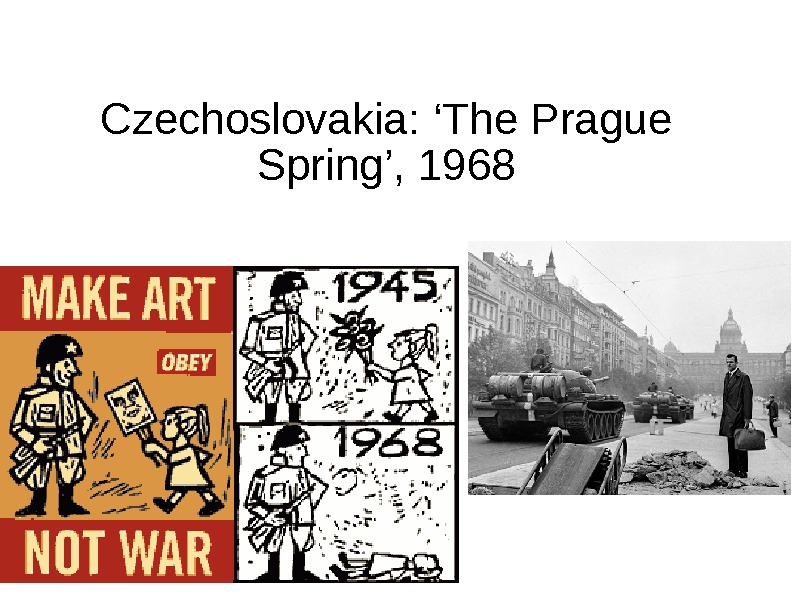
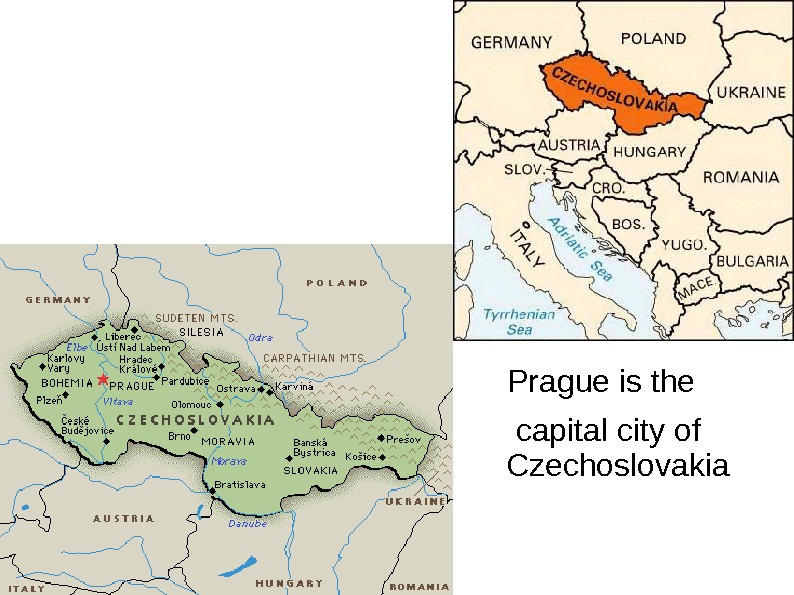
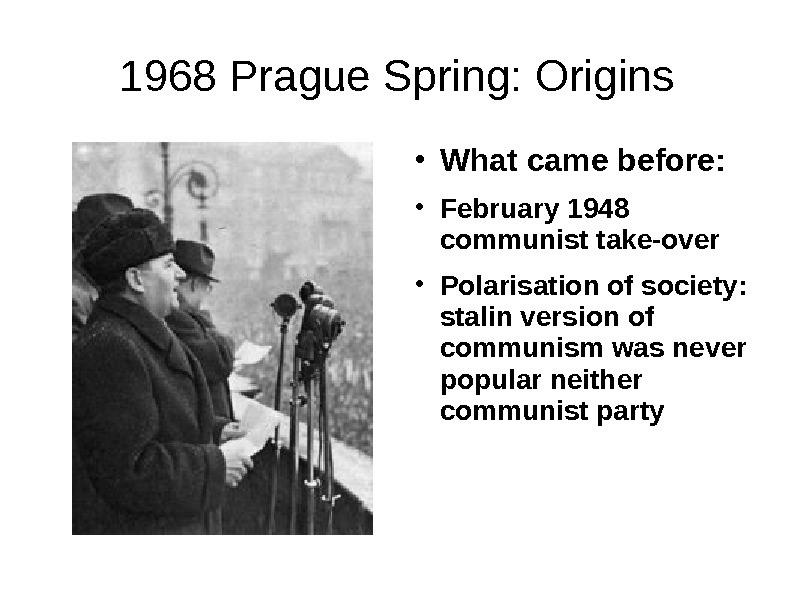

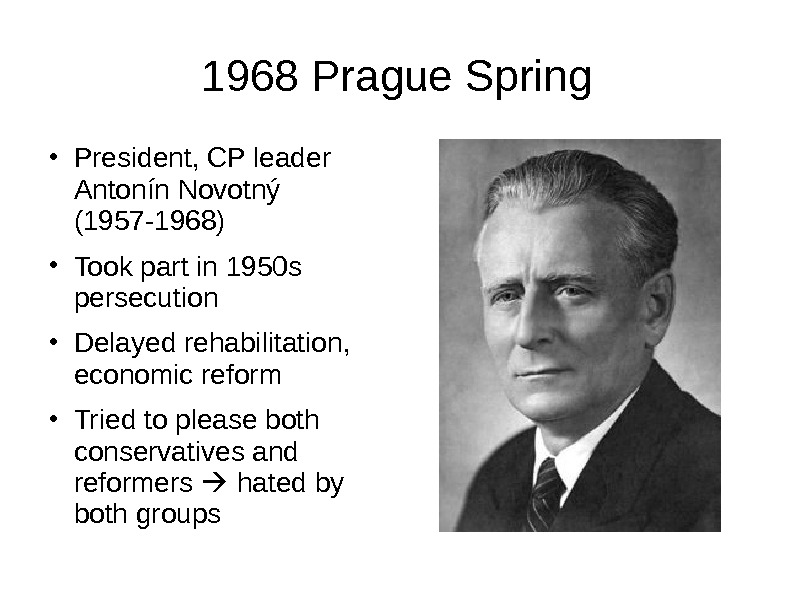
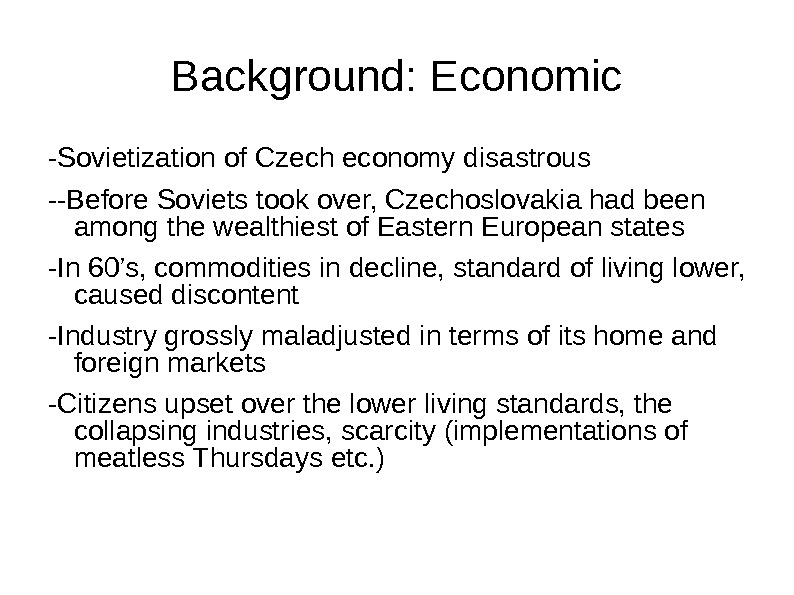
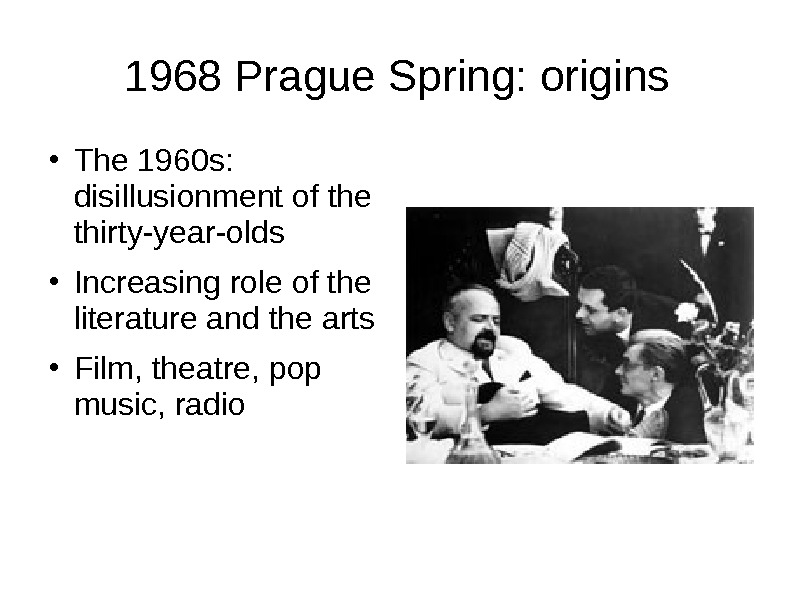
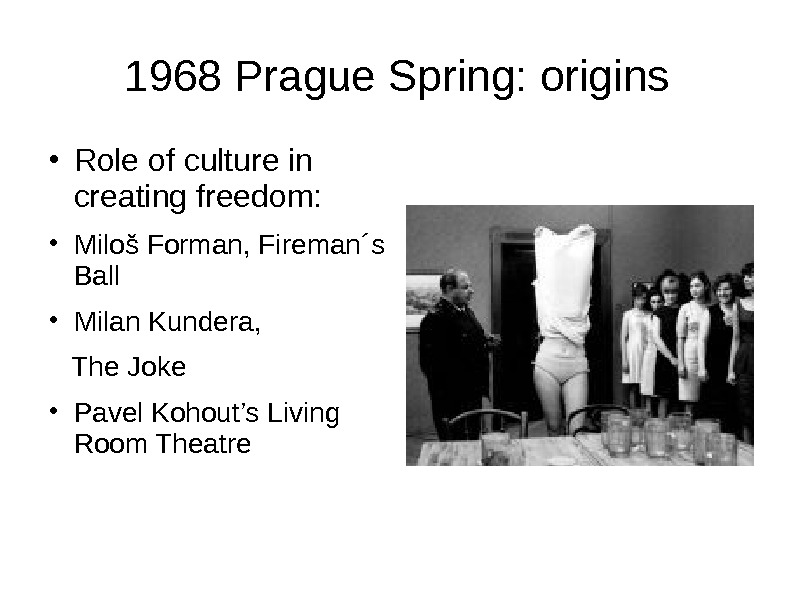

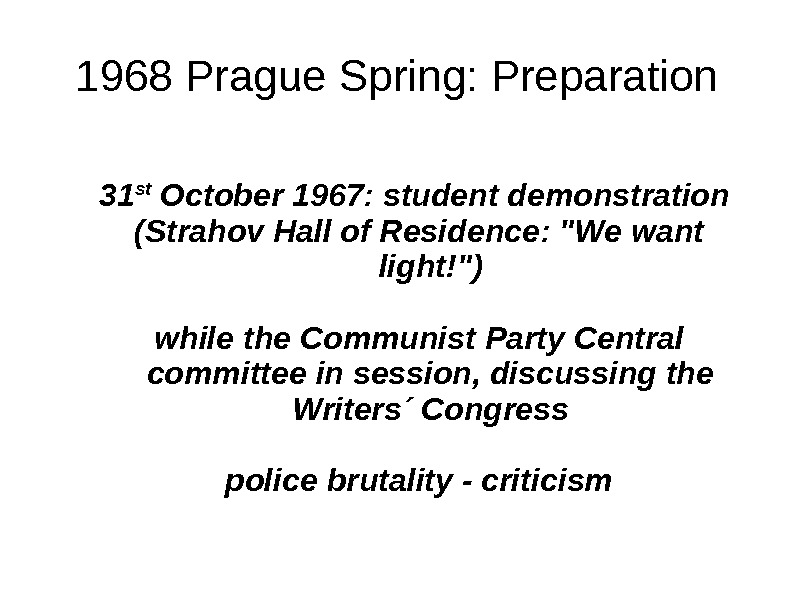
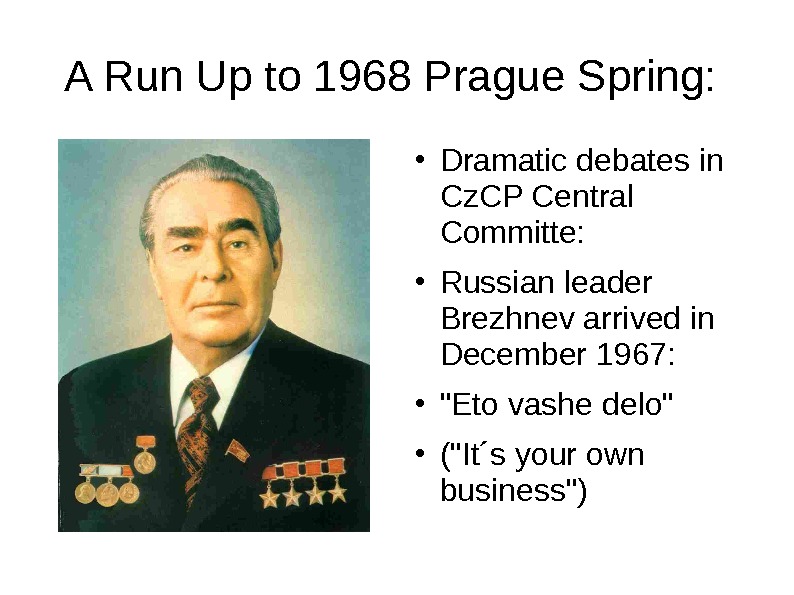
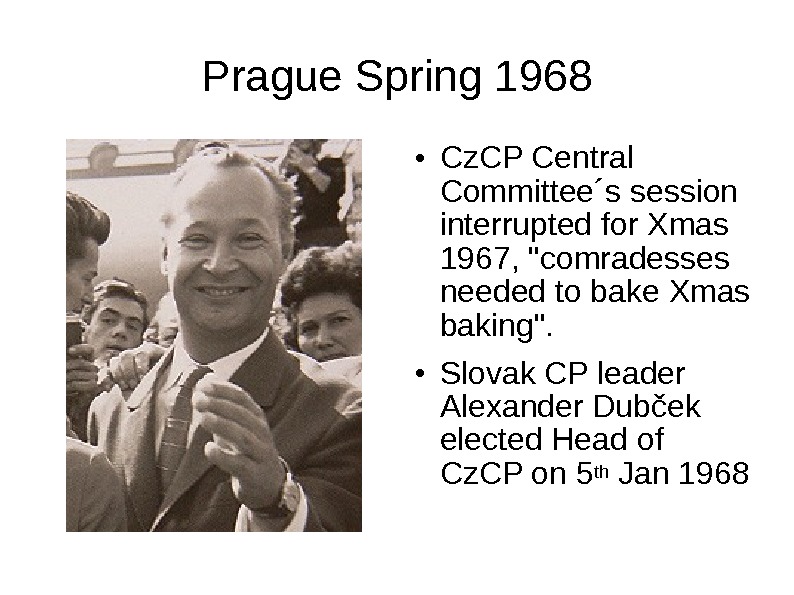
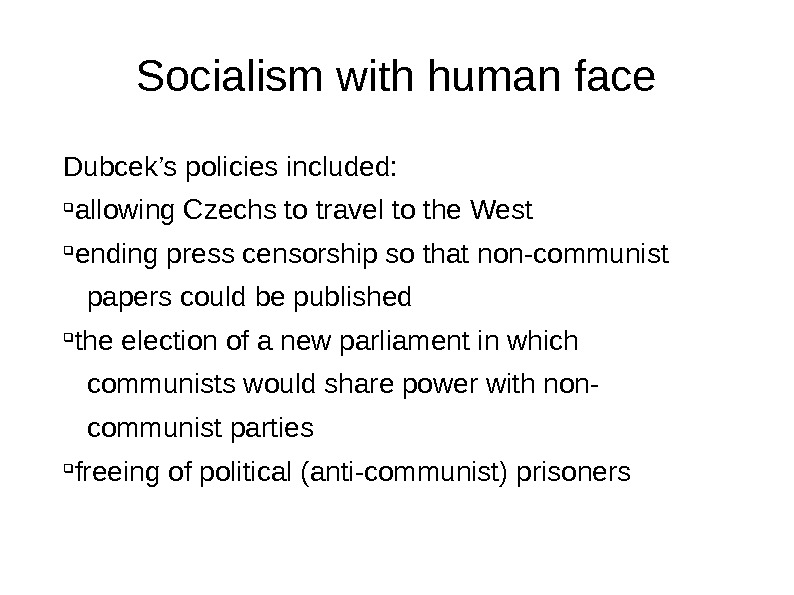
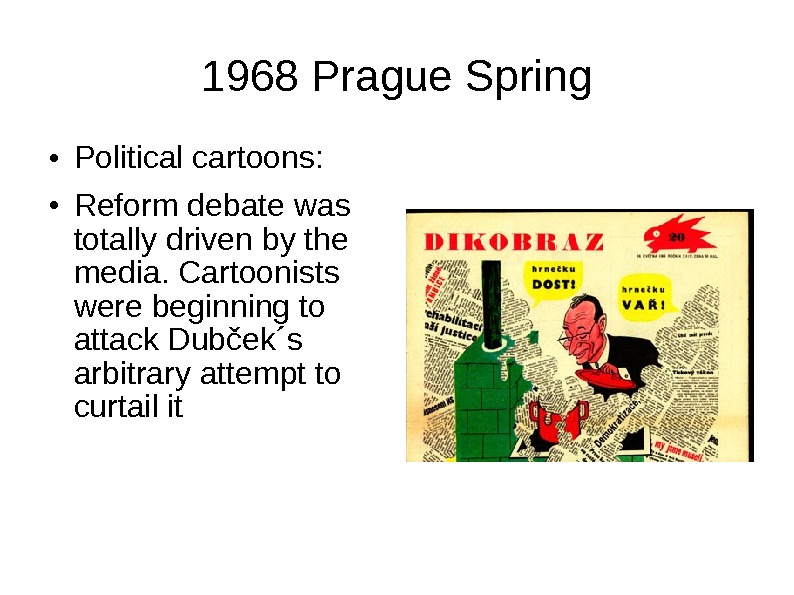
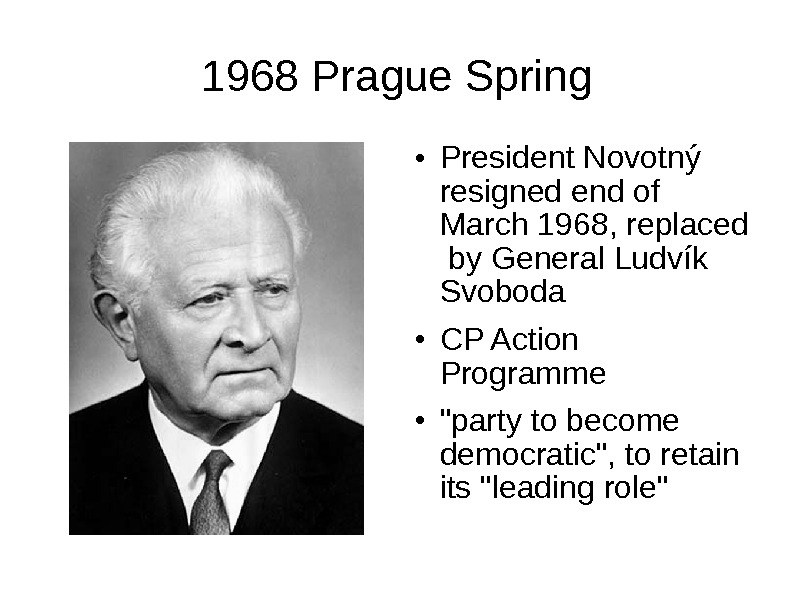
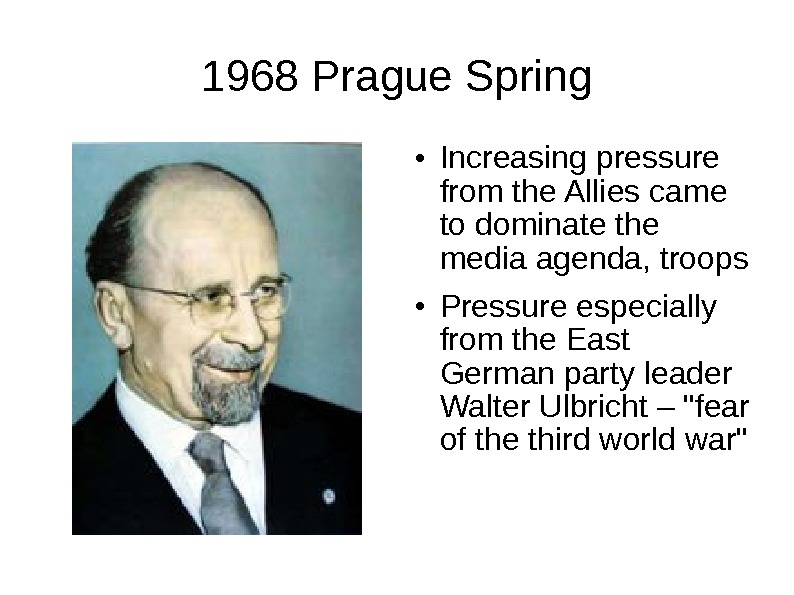
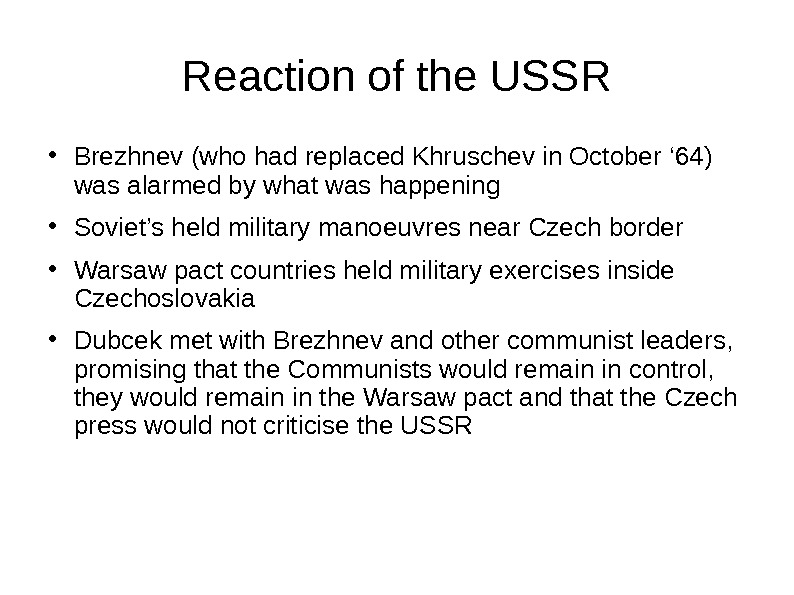
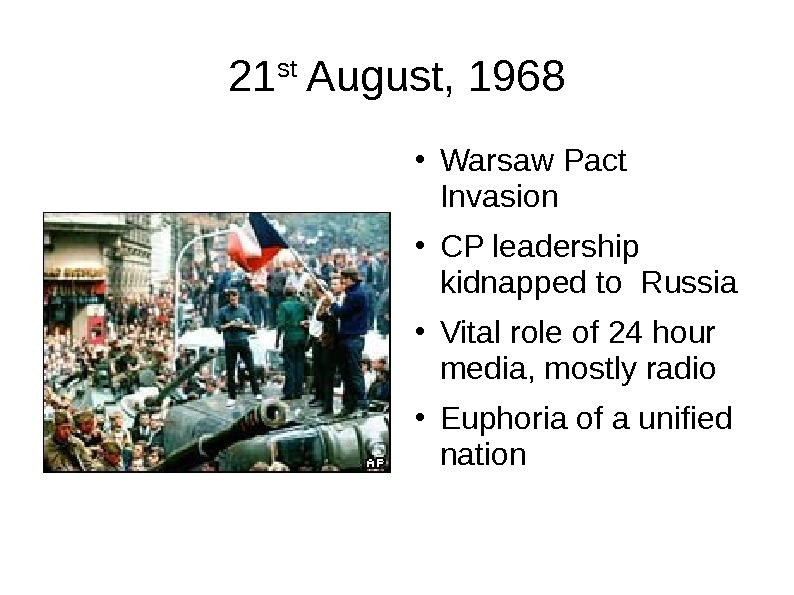
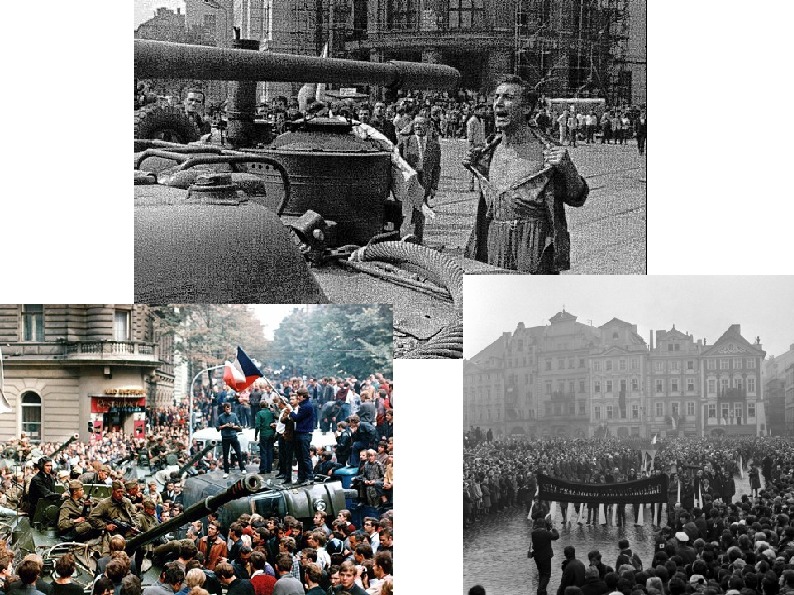
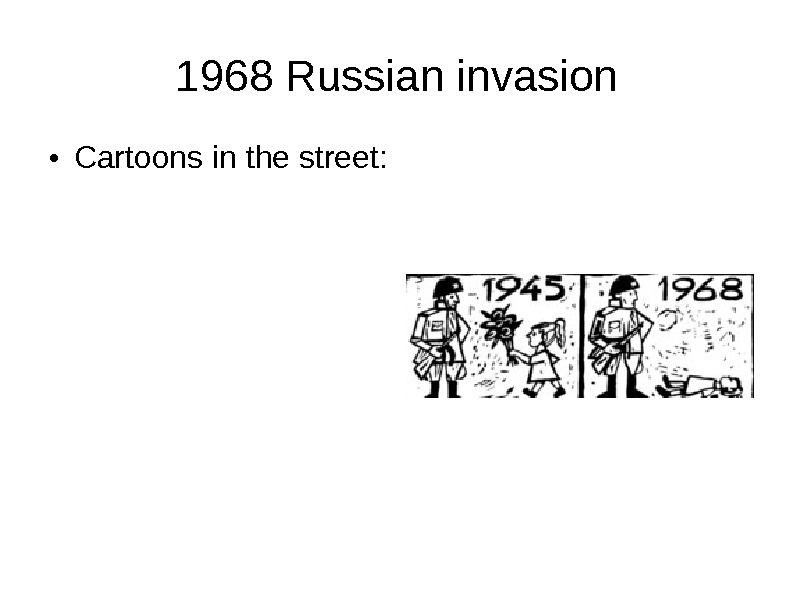
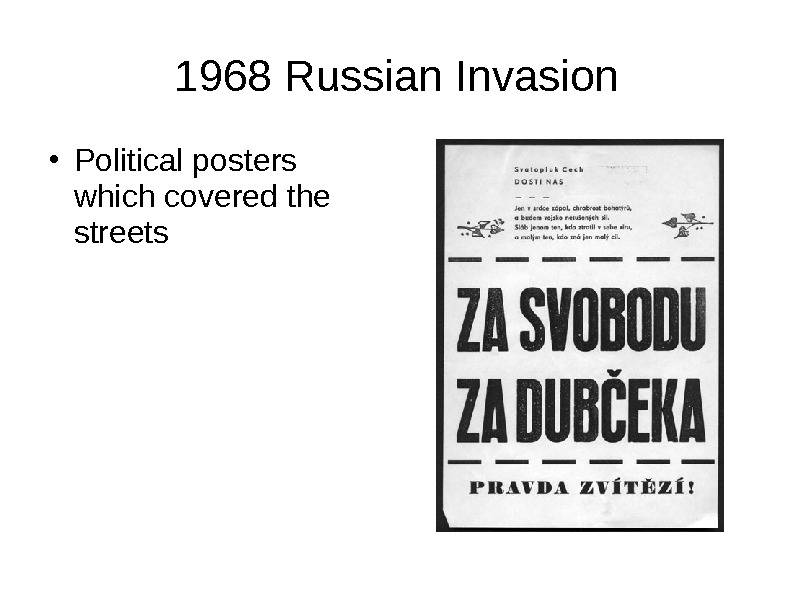
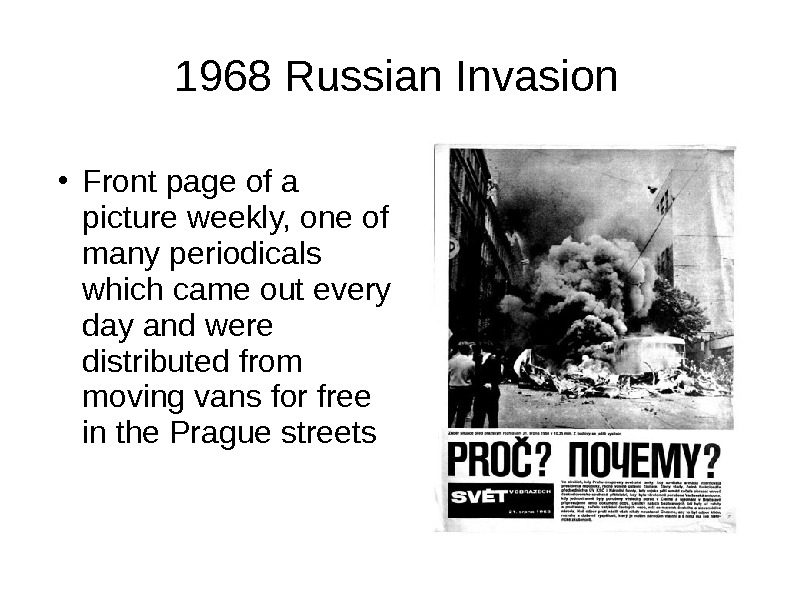
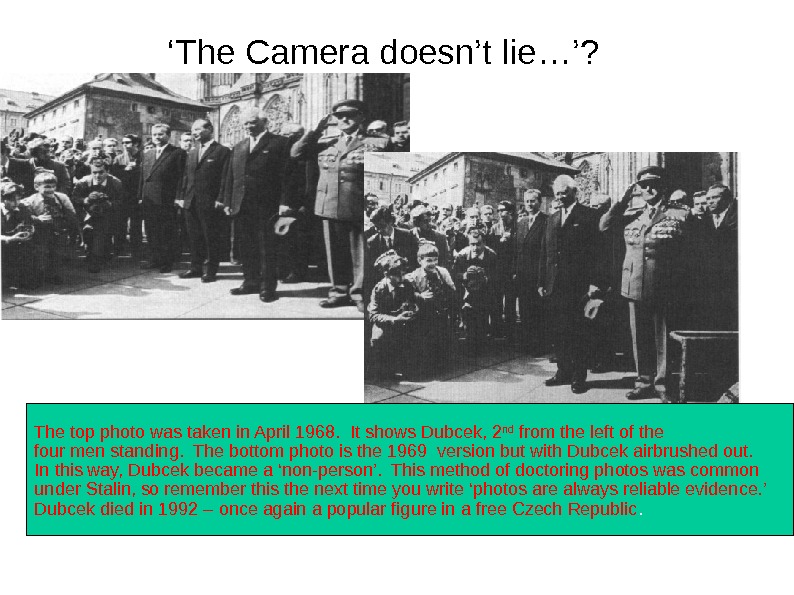
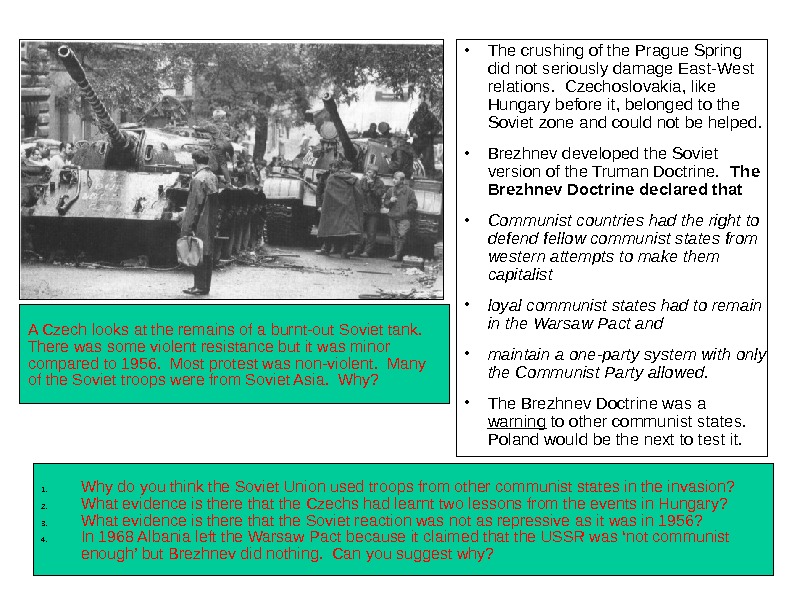
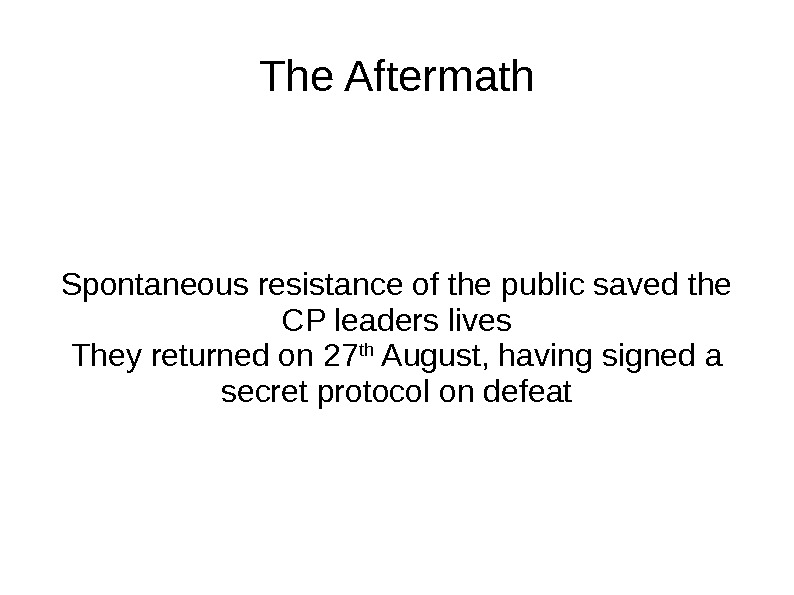
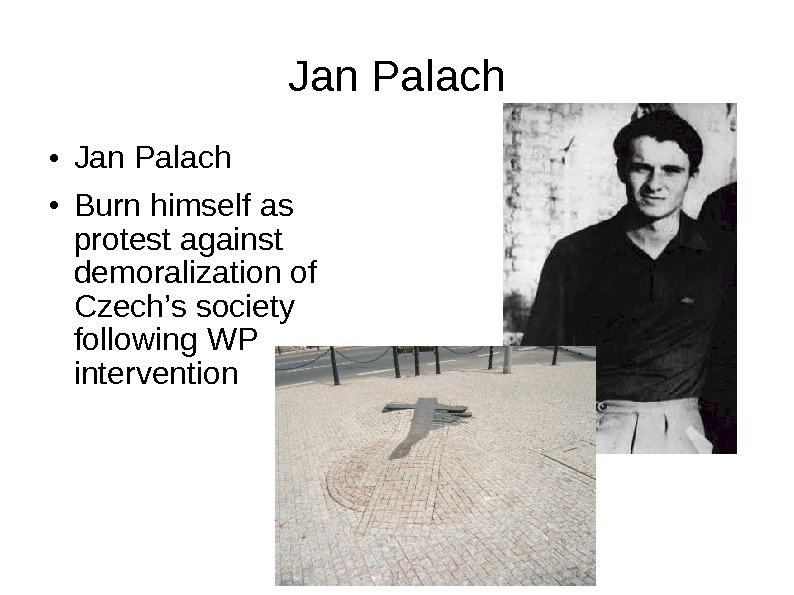
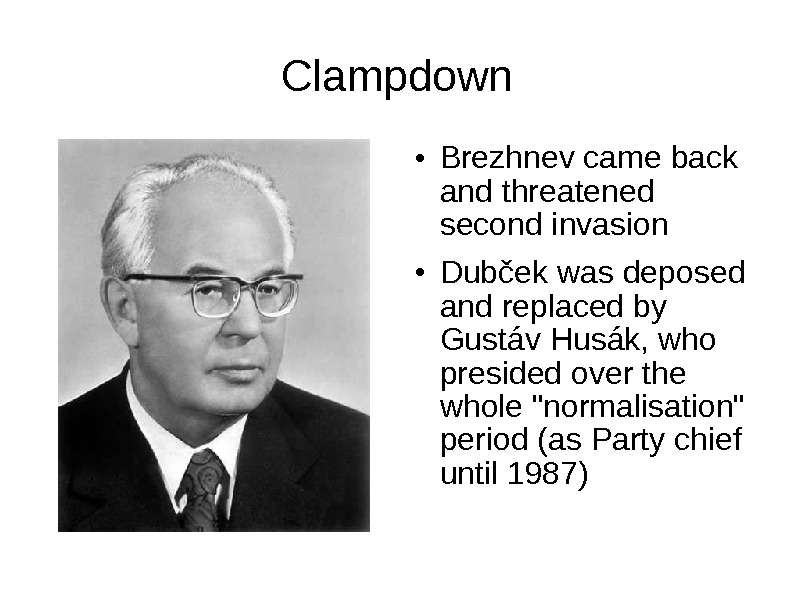
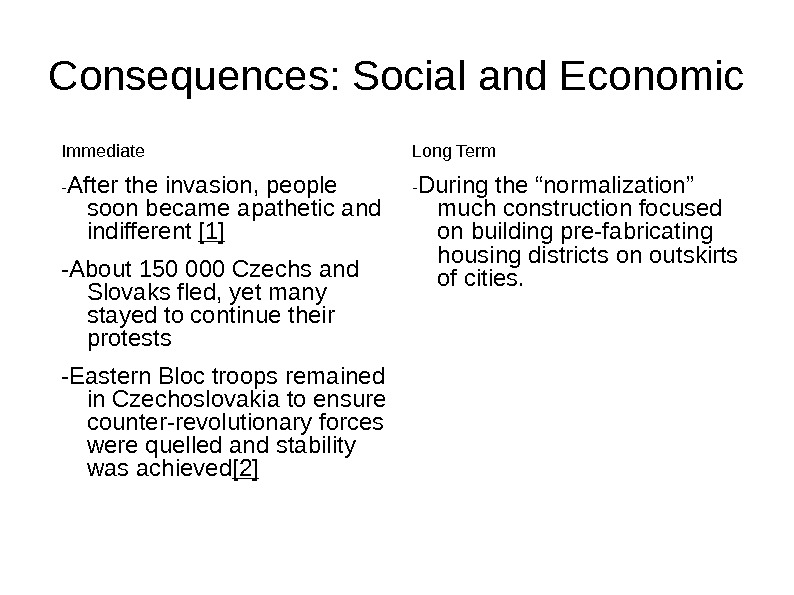
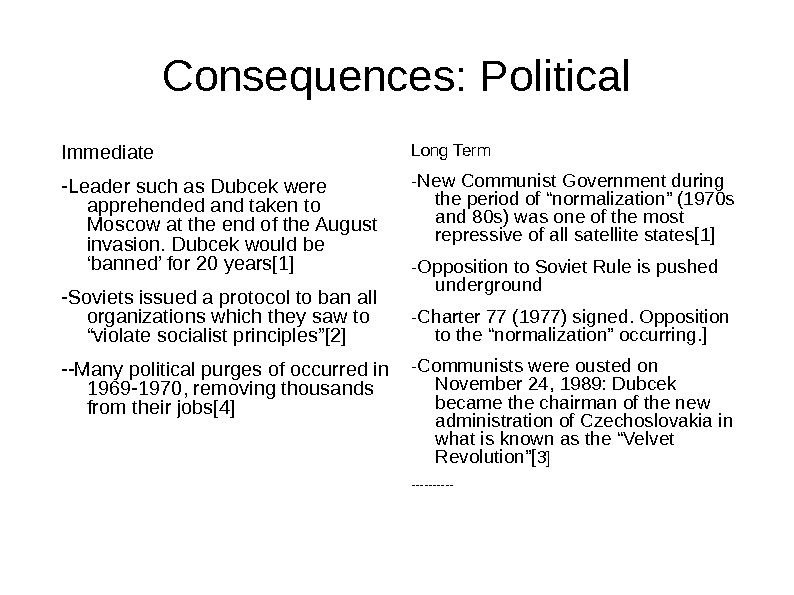
- Размер: 2.4 Mегабайта
- Количество слайдов: 29
Описание презентации Czechoslovakia: ‘The Prague Spring’, 1968 Prague is по слайдам
 Czechoslovakia: ‘The Prague Spring’,
Czechoslovakia: ‘The Prague Spring’,
 Prague is the capital city of Czechoslovakia
Prague is the capital city of Czechoslovakia
 1968 Prague Spring: Origins ● What came before: ● February 1948 communist take-over ● Polarisation of society: stalin version of communism was never popular neither communist party
1968 Prague Spring: Origins ● What came before: ● February 1948 communist take-over ● Polarisation of society: stalin version of communism was never popular neither communist party
 1968 Prague Spring: origins Show trial of may 1950 Milada Horakova Accused of treason and espionage to the West Slansky trial (Nov 1952)
1968 Prague Spring: origins Show trial of may 1950 Milada Horakova Accused of treason and espionage to the West Slansky trial (Nov 1952)
 1968 Prague Spring ● President, CP leader Antonín Novotný (1957 -1968) ● Took part in 1950 s persecution ● Delayed rehabilitation, economic reform ● Tried to please both conservatives and reformers hated by both groups
1968 Prague Spring ● President, CP leader Antonín Novotný (1957 -1968) ● Took part in 1950 s persecution ● Delayed rehabilitation, economic reform ● Tried to please both conservatives and reformers hated by both groups
 Background: Economic -Sovietization of Czech economy disastrous —Before Soviets took over, Czechoslovakia had been among the wealthiest of Eastern European states -In 60’s, commodities in decline, standard of living lower, caused discontent -Industry grossly maladjusted in terms of its home and foreign markets -Citizens upset over the lower living standards, the collapsing industries, scarcity (implementations of meatless Thursdays etc. )
Background: Economic -Sovietization of Czech economy disastrous —Before Soviets took over, Czechoslovakia had been among the wealthiest of Eastern European states -In 60’s, commodities in decline, standard of living lower, caused discontent -Industry grossly maladjusted in terms of its home and foreign markets -Citizens upset over the lower living standards, the collapsing industries, scarcity (implementations of meatless Thursdays etc. )
 1968 Prague Spring: origins ● The 1960 s: disillusionment of the thirty-year-olds ● Increasing role of the literature and the arts ● Film, theatre, pop music, radio
1968 Prague Spring: origins ● The 1960 s: disillusionment of the thirty-year-olds ● Increasing role of the literature and the arts ● Film, theatre, pop music, radio
 1968 Prague Spring: origins ● Role of culture in creating freedom: ● Miloš Forman, Fireman ´ s Ball ● Milan Kundera, The Joke ● Pavel Kohout’s Living Room Theatre
1968 Prague Spring: origins ● Role of culture in creating freedom: ● Miloš Forman, Fireman ´ s Ball ● Milan Kundera, The Joke ● Pavel Kohout’s Living Room Theatre
 1968 Prague Spring: Preparation ● June 1967: Congress of Czechoslovak Writers ● Milan Kundera: «The existence of the Czech nation is not self-evident» ● Ludvík Vaculík Party’s role is exaggerated
1968 Prague Spring: Preparation ● June 1967: Congress of Czechoslovak Writers ● Milan Kundera: «The existence of the Czech nation is not self-evident» ● Ludvík Vaculík Party’s role is exaggerated
 1968 Prague Spring: Preparation 31 st October 1967: student demonstration (Strahov Hall of Residence: «We want light!») while the Communist Party Central committee in session, discussing the Writers´ Congress police brutality — criticism
1968 Prague Spring: Preparation 31 st October 1967: student demonstration (Strahov Hall of Residence: «We want light!») while the Communist Party Central committee in session, discussing the Writers´ Congress police brutality — criticism
 A Run Up to 1968 Prague Spring: ● Dramatic debates in Cz. CP Central Committe: ● Russian leader Brezhnev arrived in December 1967: ● «Eto vashe delo» ● («It´s your own business»)
A Run Up to 1968 Prague Spring: ● Dramatic debates in Cz. CP Central Committe: ● Russian leader Brezhnev arrived in December 1967: ● «Eto vashe delo» ● («It´s your own business»)
 Prague Spring 1968 ● Cz. CP Central Committee´s session interrupted for Xmas 1967, «comradesses needed to bake Xmas baking». ● Slovak CP leader Alexander Dubček elected Head of Cz. CP on 5 th Jan
Prague Spring 1968 ● Cz. CP Central Committee´s session interrupted for Xmas 1967, «comradesses needed to bake Xmas baking». ● Slovak CP leader Alexander Dubček elected Head of Cz. CP on 5 th Jan
 Socialism with human face Dubcek’s policies included: allowing Czechs to travel to the West ending press censorship so that non-communist papers could be published the election of a new parliament in which communists would share power with non- communist parties freeing of political (anti-communist) prisoners
Socialism with human face Dubcek’s policies included: allowing Czechs to travel to the West ending press censorship so that non-communist papers could be published the election of a new parliament in which communists would share power with non- communist parties freeing of political (anti-communist) prisoners
 1968 Prague Spring ● Political cartoons: ● Reform debate was totally driven by the media. Cartoonists were beginning to attack Dubček´s arbitrary attempt to curtail it
1968 Prague Spring ● Political cartoons: ● Reform debate was totally driven by the media. Cartoonists were beginning to attack Dubček´s arbitrary attempt to curtail it
 1968 Prague Spring ● President Novotný resigned end of March 1968, replaced by General Ludvík Svoboda ● CP Action Programme ● «party to become democratic», to retain its «leading role»
1968 Prague Spring ● President Novotný resigned end of March 1968, replaced by General Ludvík Svoboda ● CP Action Programme ● «party to become democratic», to retain its «leading role»
 1968 Prague Spring ● Increasing pressure from the Allies came to dominate the media agenda, troops ● Pressure especially from the East German party leader Walter Ulbricht – «fear of the third world war»
1968 Prague Spring ● Increasing pressure from the Allies came to dominate the media agenda, troops ● Pressure especially from the East German party leader Walter Ulbricht – «fear of the third world war»
 Reaction of the USSR ● Brezhnev (who had replaced Khruschev in October ‘ 64) was alarmed by what was happening ● Soviet’s held military manoeuvres near Czech border ● Warsaw pact countries held military exercises inside Czechoslovakia ● Dubcek met with Brezhnev and other communist leaders, promising that the Communists would remain in control, they would remain in the Warsaw pact and that the Czech press would not criticise the USSR
Reaction of the USSR ● Brezhnev (who had replaced Khruschev in October ‘ 64) was alarmed by what was happening ● Soviet’s held military manoeuvres near Czech border ● Warsaw pact countries held military exercises inside Czechoslovakia ● Dubcek met with Brezhnev and other communist leaders, promising that the Communists would remain in control, they would remain in the Warsaw pact and that the Czech press would not criticise the USSR
 21 st August, 1968 ● Warsaw Pact Invasion ● CP leadership kidnapped to Russia ● Vital role of 24 hour media, mostly radio ● Euphoria of a unified nation
21 st August, 1968 ● Warsaw Pact Invasion ● CP leadership kidnapped to Russia ● Vital role of 24 hour media, mostly radio ● Euphoria of a unified nation

 1968 Russian invasion ● Cartoons in the street:
1968 Russian invasion ● Cartoons in the street:
 1968 Russian Invasion ● Political posters which covered the streets
1968 Russian Invasion ● Political posters which covered the streets
 1968 Russian Invasion ● Front page of a picture weekly, one of many periodicals which came out every day and were distributed from moving vans for free in the Prague streets
1968 Russian Invasion ● Front page of a picture weekly, one of many periodicals which came out every day and were distributed from moving vans for free in the Prague streets
 ‘ The Camera doesn’t lie…’? The top photo was taken in April 1968. It shows Dubcek, 2 nd from the left of the four men standing. The bottom photo is the 1969 version but with Dubcek airbrushed out. In this way, Dubcek became a ‘non-person’. This method of doctoring photos was common under Stalin, so remember this the next time you write ‘photos are always reliable evidence. ’ Dubcek died in 1992 – once again a popular figure in a free Czech Republic.
‘ The Camera doesn’t lie…’? The top photo was taken in April 1968. It shows Dubcek, 2 nd from the left of the four men standing. The bottom photo is the 1969 version but with Dubcek airbrushed out. In this way, Dubcek became a ‘non-person’. This method of doctoring photos was common under Stalin, so remember this the next time you write ‘photos are always reliable evidence. ’ Dubcek died in 1992 – once again a popular figure in a free Czech Republic.
 ● The crushing of the Prague Spring did not seriously damage East-West relations. Czechoslovakia, like Hungary before it, belonged to the Soviet zone and could not be helped. ● Brezhnev developed the Soviet version of the Truman Doctrine. The Brezhnev Doctrine declared that ● Communist countries had the right to defend fellow communist states from western attempts to make them capitalist ● loyal communist states had to remain in the Warsaw Pact and ● maintain a one-party system with only the Communist Party allowed. ● The Brezhnev Doctrine was a warning to other communist states. Poland would be the next to test it. 1. Why do you think the Soviet Union used troops from other communist states in the invasion? 2. What evidence is there that the Czechs had learnt two lessons from the events in Hungary? 3. What evidence is there that the Soviet reaction was not as repressive as it was in 1956? 4. In 1968 Albania left the Warsaw Pact because it claimed that the USSR was ‘not communist enough’ but Brezhnev did nothing. Can you suggest why? A Czech looks at the remains of a burnt-out Soviet tank. There was some violent resistance but it was minor compared to 1956. Most protest was non-violent. Many of the Soviet troops were from Soviet Asia. Why?
● The crushing of the Prague Spring did not seriously damage East-West relations. Czechoslovakia, like Hungary before it, belonged to the Soviet zone and could not be helped. ● Brezhnev developed the Soviet version of the Truman Doctrine. The Brezhnev Doctrine declared that ● Communist countries had the right to defend fellow communist states from western attempts to make them capitalist ● loyal communist states had to remain in the Warsaw Pact and ● maintain a one-party system with only the Communist Party allowed. ● The Brezhnev Doctrine was a warning to other communist states. Poland would be the next to test it. 1. Why do you think the Soviet Union used troops from other communist states in the invasion? 2. What evidence is there that the Czechs had learnt two lessons from the events in Hungary? 3. What evidence is there that the Soviet reaction was not as repressive as it was in 1956? 4. In 1968 Albania left the Warsaw Pact because it claimed that the USSR was ‘not communist enough’ but Brezhnev did nothing. Can you suggest why? A Czech looks at the remains of a burnt-out Soviet tank. There was some violent resistance but it was minor compared to 1956. Most protest was non-violent. Many of the Soviet troops were from Soviet Asia. Why?
 The Aftermath Spontaneous resistance of the public saved the CP leaders lives They returned on 27 th August, having signed a secret protocol on defeat
The Aftermath Spontaneous resistance of the public saved the CP leaders lives They returned on 27 th August, having signed a secret protocol on defeat
 Jan Palach ● Burn himself as protest against demoralization of Czech’s society following WP intervention
Jan Palach ● Burn himself as protest against demoralization of Czech’s society following WP intervention
 Clampdown ● Brezhnev came back and threatened second invasion ● Dubček was deposed and replaced by Gustáv Husák, who presided over the whole «normalisation» period (as Party chief until 1987)
Clampdown ● Brezhnev came back and threatened second invasion ● Dubček was deposed and replaced by Gustáv Husák, who presided over the whole «normalisation» period (as Party chief until 1987)
![Consequences: Social and Economic Immediate - After the invasion, people soon became apathetic and indifferent [1] Consequences: Social and Economic Immediate - After the invasion, people soon became apathetic and indifferent [1]](/docs//prague_spring_images/prague_spring_27.jpg) Consequences: Social and Economic Immediate — After the invasion, people soon became apathetic and indifferent [1] -About 150 000 Czechs and Slovaks fled, yet many stayed to continue their protests -Eastern Bloc troops remained in Czechoslovakia to ensure counter-revolutionary forces were quelled and stability was achieved [2] Long Term — During the “normalization” much construction focused on building pre-fabricating housing districts on outskirts of cities.
Consequences: Social and Economic Immediate — After the invasion, people soon became apathetic and indifferent [1] -About 150 000 Czechs and Slovaks fled, yet many stayed to continue their protests -Eastern Bloc troops remained in Czechoslovakia to ensure counter-revolutionary forces were quelled and stability was achieved [2] Long Term — During the “normalization” much construction focused on building pre-fabricating housing districts on outskirts of cities.
 Consequences: Political Immediate -Leader such as Dubcek were apprehended and taken to Moscow at the end of the August invasion. Dubcek would be ‘banned’ for 20 years[1] -Soviets issued a protocol to ban all organizations which they saw to “violate socialist principles”[2] —Many political purges of occurred in 1969 -1970, removing thousands from their jobs[4] Long Term -New Communist Government during the period of “normalization” (1970 s and 80 s) was one of the most repressive of all satellite states[1] -Opposition to Soviet Rule is pushed underground -Charter 77 (1977) signed. Opposition to the “normalization” occurring. ] -Communists were ousted on November 24, 1989: Dubcek became the chairman of the new administration of Czechoslovakia in what is known as the “Velvet Revolution”[ 3] ——
Consequences: Political Immediate -Leader such as Dubcek were apprehended and taken to Moscow at the end of the August invasion. Dubcek would be ‘banned’ for 20 years[1] -Soviets issued a protocol to ban all organizations which they saw to “violate socialist principles”[2] —Many political purges of occurred in 1969 -1970, removing thousands from their jobs[4] Long Term -New Communist Government during the period of “normalization” (1970 s and 80 s) was one of the most repressive of all satellite states[1] -Opposition to Soviet Rule is pushed underground -Charter 77 (1977) signed. Opposition to the “normalization” occurring. ] -Communists were ousted on November 24, 1989: Dubcek became the chairman of the new administration of Czechoslovakia in what is known as the “Velvet Revolution”[ 3] ——

